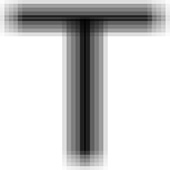computer typography. The language and structure of this course has been kept lucid and simple, keeping in mind Indian undergraduate students of art and design.
There are two aspects of computer typography that we would be looking at are:
• Basics of Computer Fonts: which would introduce students to the various ways in which fonts are represented in a computer, and
• Using Computer Fonts: which would detail how computer fonts can be used.
We must begin by defining what typography is. The word typography comes from the combination of two Greek words; “Typos” which means ‘a dent, an impression, or a mark’ and “graphy”which means ‘writing’. The word originally meant writing by making impressions. Over the years a broader definition of typography has been derived. It can hence be stated as:
“Typography is the process of setting and arranging text for a combination of aesthetic and functional goals”.
This process involves two activities:
1. Selecting the Fonts:
There are a huge number of fonts available today. Selecting the right ones is one of the primary decisions that a graphic designer has to take. This decision of selecting the fonts to be used can be based on several factors. Font selection depends largely on the aesthetic preference of the graphic designer and the function or purpose (medium and context) for which fonts need to be used. The cost of the font and the size of its family and the number of variations available can also be considered while selecting fonts.
2. Arranging or Placing the Text and Using the Fonts:
In graphic design parlance this is called composing the text or typesetting. This includes deciding the size of the page, the margins for the text to be set. The sizes, positions and orientations of the various kinds of texts, such as headings, body copy etc. Typesetting also involves setting the distance between two lines of text; which in graphic design terms is called leading. How the text would be aligned (left, right or center) is an integral part of typesetting.
Good typography does not necessarily mean the use of beautiful letters. Typography is meant to ease the reading process and help the reader read the text with the least possible amount of effort. Hence, the larger goal of typography is to help the author communicate effectively with the audience and facilitate the comprehension of the text.
Assignment 1:
• In the given assignment, please try and answer the following questions.
• Use the available books in your library, online sources or talk to experienced graphic/ type designers.
• After noting down the answers, please discuss your answers with your colleagues and faculty members.
There is a possibility that you might not reach a single unambiguous answer. The goal of the assignment is to stimulate a discussion rather than to come up with a definite answer. Some of the questions are purposefully challenging, complex and ambiguous in nature; they are meant for the more experienced students and faculty, but undergraduates should nonetheless attempt to answer them.
Q1. What is a symbol, a character, a letter and a glyph?
How would you describe the Devanagari क ?
When is it a character, letter and a glyph?
Can we call it an alphabet?
Q2. Define or describe what a typeface, a font, a font family and a typeform are?
What are the relationships between these terms?
Q3. Describe in your own words the similarities, differences and the relationships between:
Typography, Lettering and Calligraphy.




Digital Typography Downloads:
• Presentation - Slideshow - pdf

